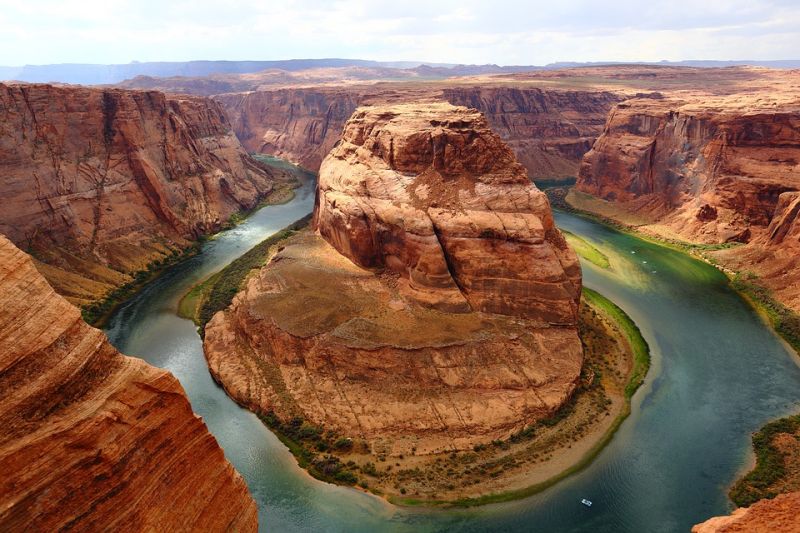Interior and States Sign Historic Drought Agreements to Protect Colorado River
Published on by Water Network Research, Official research team of The Water Network in Government
The Department of the Interior, Bureau of Reclamation and representatives from all seven Colorado River Basin states gathered today and signed completed drought contingency plans for the Upper and Lower Colorado River basins.
These completed plans are designed to reduce risks from ongoing drought and protect the single most important water resource in the western United States.

Colorado River (Image source: Pixabay, labeled for reuse)
“This is an historic accomplishment for the Colorado River Basin. Adopting consensus-based drought contingency plans represents the best path toward safeguarding the single most important water resource in the western United States,” said Reclamation Commissioner Brenda Burman. “These agreements represent tremendous collaboration, coordination and compromise from each basin state, American Indian tribes, and even the nation of Mexico.”
In addition to the voluntary reductions and other measures to which the basin states agreed, Mexico has also agreed to participate in additional measures to protect the Colorado River Basin. Under a 2017 agreement, Minute 323 to the 1944 U.S. – Mexico Water Treaty, Mexico agreed to implement a Binational Water Scarcity Contingency Plan but only after the United States adopted the DCP.
The Colorado River, with its system of reservoirs and water conveyance infrastructure, supplies water for more than 40 million people and nearly 5.5 million acres of farmland across the western United States and Mexico. The reservoirs along the river have performed well—ensuring reliable and consistent water deliveries through even the driest years. But, after 20 years of drought, those reservoirs are showing increasing strain; Lake Powell and Lake Mead, the two largest reservoirs on the system and in the United States, are only 39% and 41% full respectively. And, while the basin experienced above-average snowpack in 2019, the total system storage across the basin began the water year at just 47% full.
“The urgency for action in the basin is real, and I applaud all of the parties across the seven states and Mexico for coming together and reaching agreement to protect the Colorado River,” said Burman. “I’m glad to finally say that ‘done’ is done.”
Source: USBR.gov
Media
Taxonomy
- Disaster Risk Reduction
- Hydrology
- Risk Assessment
- Drought
- Hydrogeology